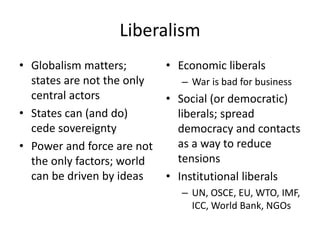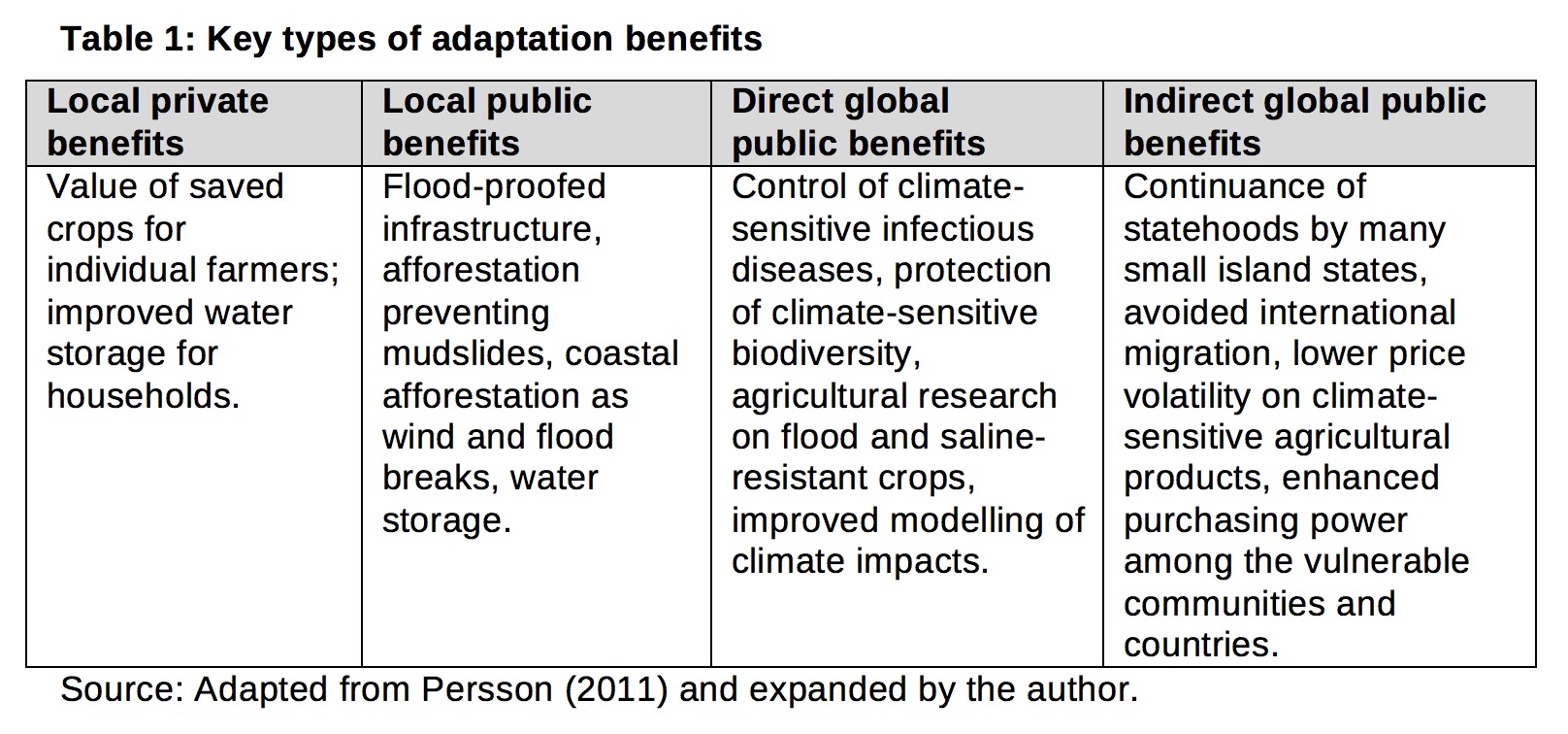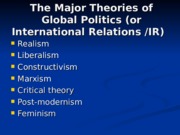Realism and liberalism are two major theories in international relations that have significantly shaped the way states interact with one another and understand the world around them. While both approaches have their own unique perspectives on international relations, they also have some important differences that set them apart.
Realism is a theory that emphasizes the role of power and national interest in shaping international relations. Realists argue that states are motivated by self-interest and will use any means necessary to achieve their goals, including military force and economic coercion. They view the international system as a competitive and anarchy, where states must fend for themselves and protect their own interests.
Liberalism, on the other hand, is a theory that emphasizes cooperation and the role of international institutions in shaping international relations. Liberalists argue that states can and should work together to achieve common goals, such as promoting global peace and prosperity. They view the international system as a community of states that can and should work together to address common challenges.
One key difference between realism and liberalism is their understanding of human nature. Realists tend to view humans as inherently selfish and self-interested, while liberalists view humans as capable of cooperation and altruism. This difference in understanding of human nature leads to different predictions about how states will behave in the international system. Realists expect states to act in their own self-interest and pursue power and security at all costs, while liberalists believe that states can and should work together to address common challenges.
Another key difference is the role of international institutions. Realists tend to be skeptical of international institutions, arguing that they are ineffective in shaping international relations and often serve as tools for powerful states to pursue their own interests. Liberalists, on the other hand, view international institutions as important tools for promoting cooperation and resolving disputes peacefully.
Despite these differences, realism and liberalism do share some common ground. Both approaches recognize the role of power and national interest in shaping international relations, and both recognize the importance of maintaining a balance of power to avoid conflicts. However, they differ in their approaches to achieving this balance and their understanding of the role of international institutions in shaping international relations.
In conclusion, realism and liberalism are two major theories in international relations that offer different perspectives on how states interact with one another and understand the world around them. While they share some common ground, they also have significant differences in their understanding of human nature, the role of international institutions, and the role of power and national interest in shaping international relations.
Theories of International Relations: Realism, Liberalism, Constructivism

Both Realism and Liberalism believe that the state is anarchical, but Realism focuses on self-help, while Liberalism focuses on self-determination. One of the baselines for political realism is the clause of the anarchic nature of international relations. Furthermore, it contends that nations are obligated to behave in this manner in order to survive in the international system. This also contributes to the development of powerful forces that are at work in the world today such as democracy, markets and ethnic hatred. According to Baylis, Smith and Owens 2008 , liberalism is a good theory of governing within states and between peoples and states internationally contrastingly realism is regarded as an anarchic sphere, liberals look for project values of order, autonomy, impartiality and toleration into international relations.
Realism vs. Liberalism in International Climate Governance

The essence of liberalism is freedom, which can achieved only through prioritizing the man, thus the main issue for a liberal is not society or any its part, but an individual himself and his will. Liberalism has quite a long history of existence, existence not passive, but an active one, in the form of active public movements, functioning of numerous parties, etc. According to Aron, the value of military force is diminished, while economic, ideological and other non-violent forces in international relations have grown considerably, but the threat of military conflicts remains. Thus, the concept of liberalism tries to establish rules applicable to all people, while leaving everyone a free choice. While Realism is the oldest of the three theories and Marxism is the youngest, Liberalism is the most influential today. The first theory to be dealt with is Realism. The concept of the international system as anarchic is the foundation for most, if not all, paradigms used in the study of international relations.
Realism, Liberalism, Marxism and the Phenomenon of Global Integration Essay Example

Introducing Realism in International Relations Theory. In summary, realism and liberalism bear some similarities in their views on the possibility of war; danger the world entails; the absence of world government; the power distribution within international politics; and the importance of military power and national interest. In other words, realists do not look to change the world, they believe in seeing the world for what it is and working with it to create the best possible outcome to fulfill self-benefiting interests. The only motivation that they may have is a pragmatic approach to international affairs Doyle 60. Just like other realists, they saw human nature as being essentially evil and selfish, they believed that military readiness at all times was essential, and that peaceful cooperation between states was only possible through the balance of power on the global scale. Another contender is the liberal idea of culture, suggesting that liberal states tend to trust similarly liberal states and overcome conflict through discourse and negotiation.







